Windows Server Core Task Manager

Windows Server Core is a streamlined version of the Windows Server operating system. It lacks the graphical user interface (GUI) of the full version and is intended for use in environments where remote management is preferred. One of the key tools available in Windows Server Core is the Task Manager.
What is Task Manager?
Task Manager is a system utility that provides information about running processes, their resource utilization, and the overall system performance. It is an essential tool for monitoring and troubleshooting issues in Windows systems.
How to access the Task Manager in Windows Server Core
- Press Ctrl+Shift+Esc to open Task Manager. This is the quickest way to launch it.
- Alternatively, you can use the Ctrl+Alt+Del shortcut, select Task Manager from the menu, and click on the «More details» button.
- You can also open Task Manager from the command prompt by running the «taskmgr» command. This is useful if your system is unresponsive or if you prefer to work with command-line tools.
Features of Task Manager
The Windows Server Core Task Manager has a similar interface to the full version, but with fewer tabs and options. Here are the key features:
- Processes — this tab shows all running processes, their status, CPU and memory usage, and other details. You can sort the list by any column and end a process if needed.
- Services — this tab displays a list of Windows services and their status (running, stopped, etc.). You can start, stop or restart a service from here.
- Performance — this tab provides a real-time visualization of system resource usage (CPU, memory, disk, network). You can see graphs for each resource and customize the view by adding or removing counters.
- Users — this tab shows all logged-in users and their status. You can disconnect a user session if necessary.
Task Manager alternatives

While Task Manager is a powerful tool, it has its limitations. Here are some alternatives that you can use in Windows Server Core:
- Process Explorer — a more advanced process monitoring utility that shows detailed information about processes, handles, DLLs, and more. It is a standalone executable that you can download from the Microsoft website.
- Performance Monitor — a built-in system monitoring tool that provides a wide range of performance counters and data collectors. It can help you diagnose system-wide issues and detect bottlenecks.
- PowerShell — a command-line shell and scripting language that lets you automate tasks, manage system settings, and interact with Windows services. It is especially useful for remote management and configuration.
Conclusion
Task Manager is a simple but essential tool in Windows Server Core that lets you monitor and manage running processes, services, and system resources. While it has its limitations, it provides enough information for most troubleshooting and maintenance tasks. If you need more advanced functionality, you can use other tools such as Process Explorer, Performance Monitor, or PowerShell.
Windows Server Core Task Manager: Подробный Взгляд
Компания Microsoft предоставляет полный спектр серверных продуктов для управления IT-инфраструктурой предприятий. Windows Server Core — это один из таких продуктов, который широко используется в корпоративном мире. С его помощью администраторы могут управлять всеми аспектами сервера из командной строки.
Что такое Windows Server Core?
Windows Server Core является специальным облегченным вариантом Windows Server. Эта версия предназначена только для установки на сервера, и она не содержит графического интерфейса. Это означает, что все действия с этой операционной системой выполняются через командную строку.
Windows Server Core создана для повышения безопасности и производительности серверов. Она потребляет меньше ресурсов, чем полная версия Windows Server, и при этом обеспечивает все необходимые функции для запуска серверных приложений и служб.
Что такое Task Manager в Windows Server Core?
Task Manager— это инструмент, который позволяет администраторам сервера отслеживать и контролировать процессы, работающие на сервере. Этот инструмент позволяет отслеживать использование процессора, памяти и дискового пространства, а также позволяет отключать нежелательные процессы.
Task Manager по умолчанию включен в Windows Server Core и может быть запущен из командной строки. Он предоставляет информацию о всех активных процессах и потребляемых ими ресурсах. Имеется возможность отображения графиков использования процессора, памяти и диска.
Как использовать Task Manager в Windows Server Core?
Для открытия Task Manager в Windows Server Core нужно выполнить команду:

taskmgr

После запуска Task Manager можно увидеть все основные параметры, такие как использование процессора, памяти и дискового пространства. Кроме того, можно выбрать вкладку со списком всех активных процессов.
Для отключения нежелательных процессов следует выбрать вкладку «Запущенные процессы». Затем выбрать процесс, который потребляет более половины процессора или использует слишком много памяти, и нажать «Завершить процесс».
Заключение
Task Manager в Windows Server Core является мощным инструментом для отслеживания и управления процессами на сервере. Он позволяет администраторам увидеть, какие процессы используют большинство ресурсов и отключить нежелательные процессы.
Если вы работаете в среде Windows Server Core, Task Manager должен быть представлен в вашем арсенале инструментов. Он позволяет работать более эффективно, улучшает производительность сервера и повышает безопасность.
Windows Server Core Task Manager: Effective Management of System Processes
Windows Server Core Task Manager provides a comprehensive insight into the processes running on the server. The tool is a central management system that helps to view and manage processes, memory usage, network performance, and system resource utilization. The task manager allows administrators to monitor and optimize server performance, uptime, and resource management.
Features of Windows Server Core Task Manager
- Process Management: The task manager enables administrators to view and terminate processes running on the system. The tool provides real-time information about the process state, CPU, memory and network usage.
- Memory Management: The feature provides insights into the amount of memory used by individual processes. Administrators can view the memory consumption status of each process and terminate those consuming too much system memory.
- Performance Optimization: The task manager allows administrators to optimize the performance of the system by terminating or prioritizing processes,
- Resource Utilization Analysis: The tool enables administrators to analyze and optimize server resource utilization. The task manager provides a graphical representation of CPU and memory usage across multiple processes, allowing administrators to prioritize system resources efficiently.
- Real-time monitoring: The tool updates data in real-time, and administrators can monitor system resource utilization and performance continually.
- Process Details: The task manager provides detailed information about the process, including file location, thread count, the user account associated with the process, and uptime.
How to Access Windows Server Core Task Manager

There are different ways to access the Windows Server Core Task Manager:
- Use the Keyboard Shortcut: Pressing Ctrl + Shift + Esc will launch the task manager.
- Use Tasklist: Open a command prompt and enter the tasklist command. This will display a list of running processes, including the process ID and memory usage.
- Use PowerShell: Open PowerShell and enter the Get-Process command. This command provides information about running processes and their memory consumption status.
How to Use Windows Server Core Task Manager
The Windows Server Core Task Manager interface is split into various tabs; each tab has diverse functions. The following steps will be useful in managing system services and processes:
- To view and terminate processes, click on the Processes tab, and terminate any processes that consume too much system resources.
- To view resource utilization, click on the Performance tab, and analyze CPU and memory utilization of all processes.
- Click on the Details tab to view detailed information about individual processes.
- The Details tab allows users to sort the processes by name or memory consumption size. This can help in identifying processes that are consuming too much system memory.
- The App History tab provides users with data on the amount of runtime each application has utilized in the past.
Conclusion

Windows Server Core Task Manager is an indispensable tool for server administrators. With the ability to view, manage and optimize server processes and resource utilization, the tool makes server monitoring an easy and seamless process.
Whether you aim to prioritize system resources or terminate resource-hogging processes, the task manager offers the necessary tools to keep the server at optimal performance levels. Utilizing the tool would prove essential to protecting your system from crashes and system downtime.
Server Core type of installation in Windows Server, is a very minimal installation for Windows Server 2025 Standard or Windows Server 2025 Datacenter editions. Server Core installations are meant for System Administrators or advanced users to interact with the Server using a command-line interface. A Server Core installation has PowerShell terminal as its main CLI (Command-Line Interface). A CLI (Command-Line Interface) is a terminal application for System Administrators or advanced users to interact with the Operating System using a text–based interface. In a text–based Command-line interface, System Administrators or advanced users can input text–based commands to interact with the Operating System.
Below screenshot shows the PowerShell terminal application in a Windows Server 2025 Server Core installation. From the below image, you can see that the PowerShell terminal is running inside Command Prompt (cmd.exe).
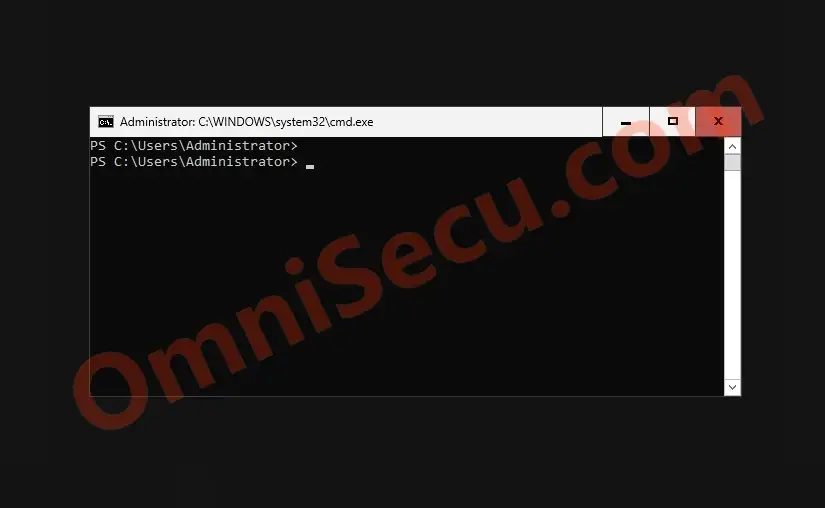
Even though Server Core installations are meant for System Administrators or advanced users to interact with the Server using a command-line interface, there are many GUI tools available, by default, in Windows Server Core installations.
Some Default GUI tools in Server Core
Task Manager (taskmgr.exe)
The Task Manager app in Windows Operating System can be used to view the processes & services running in the Operating System, performance of the Operating System, users logged-in to the Operating System etc. To run the Task Manager Applet, type «taskmgr.exe» from the command prompt or PowerShell terminal and press the «Enter» key, as shown below.
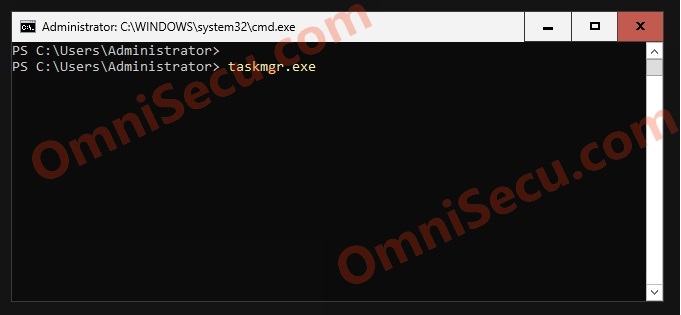
Following image shows the Task Manager GUI app running in a Windows Server 2025 Server Core installation.
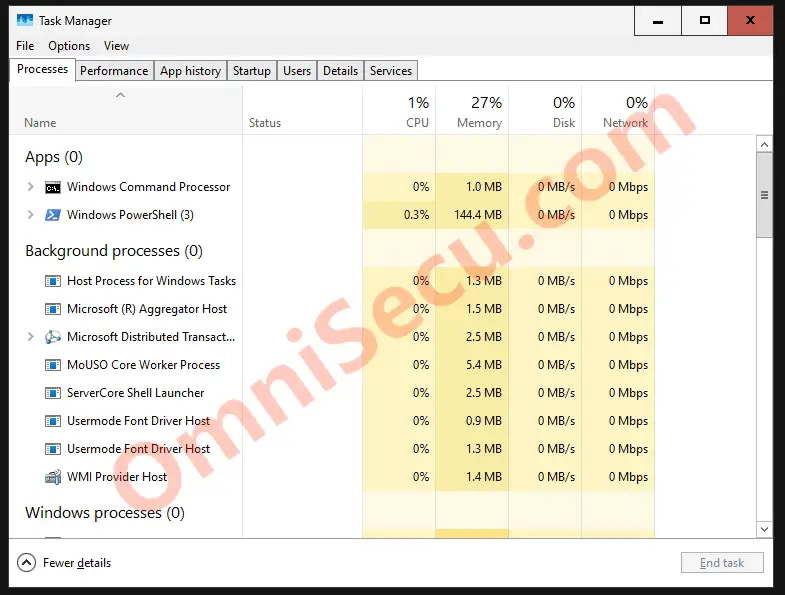
Date and Time Control Panel Applet (control.exe timedate.cpl)
Date and Time Control Panel Applet in the Windows Operating System can be used to set the Date, Time, and the Time Zone for Windows Operating Systems. To run the Date and Time Control Panel Applet, type «control.exe timedate.cpl» or simply «timedate.cpl» from the command prompt or PowerShell terminal and press the «Enter» key, as shown below.
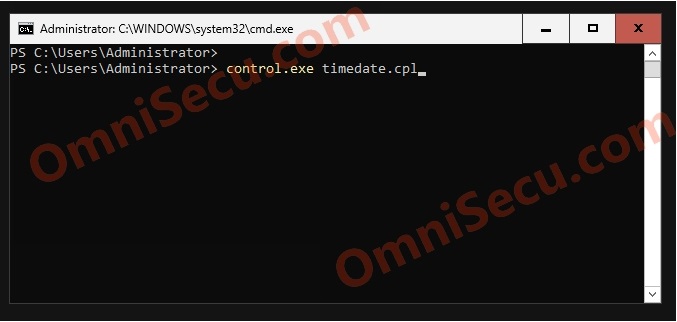
Following image shows the Date and Time Control Panel GUI Applet running in a Windows Server 2025 Server Core installation.
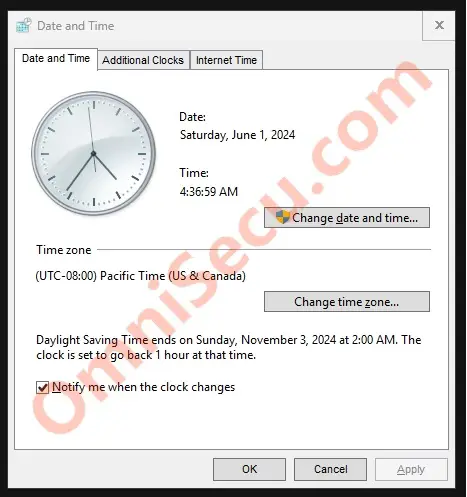
Region Control Panel Applet (control.exe intl.cpl)
Region Control Panel Applet in the Windows Operating System can be used to configure international settings for the Windows Operating Systems. To run the Region Control Panel Applet, type «control.exe intl.cpl» or simply «intl.cpl» from the command prompt or PowerShell terminal, and press the «Enter» key as shown below.
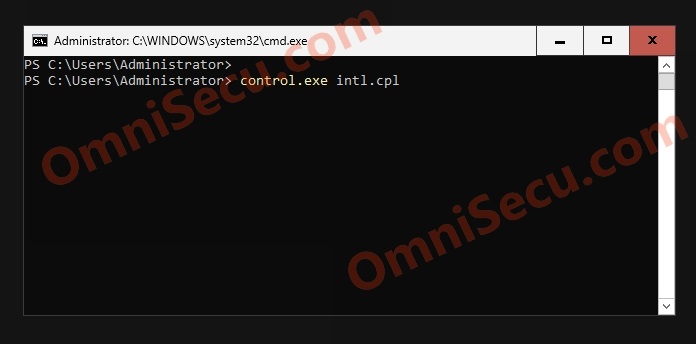
Following image shows the Region Control Panel GUI Applet running in a Windows Server 2025 Server Core installation.
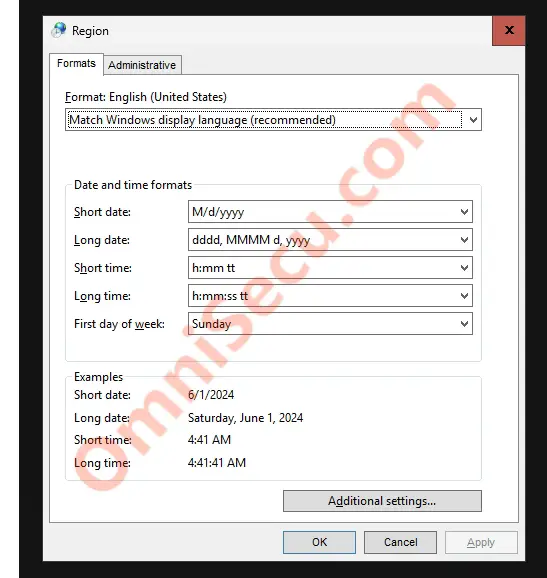
System Information Control Panel Applet (msinfo32.exe)
System Information Control Panel Applet in the Windows Operating System can be used to view information related with the Operating System, hardware and software. To run the System Information Control Panel Applet, type «msinfo32.exe» from the command prompt or PowerShell terminal, and press the «Enter» key as shown below.
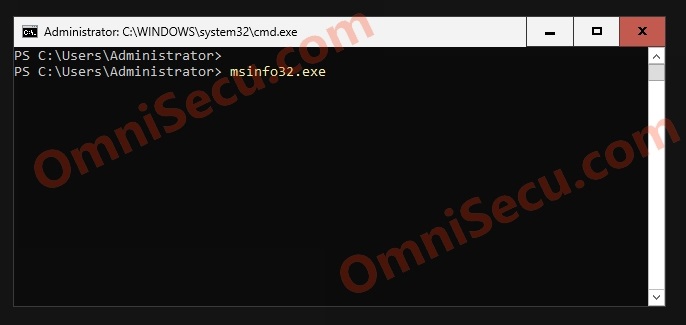
Following image shows the System Information Control Panel GUI Applet running in a Windows Server 2025 Server Core installation.
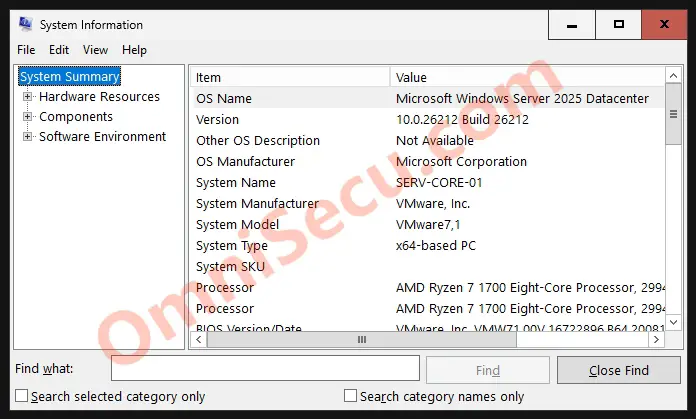
Windows installer (msiexec.exe)
Windows installer GUI application can be used to install and configure installation packages for the Windows Operating Systems. To run the Windows installer application, type «msiexec.exe» from the command prompt or PowerShell terminal, and press the «Enter» key as shown below.
Please note that you need to provide correct options to run this application properly. Please visit the next link to learn more about msiexec Windows installer.
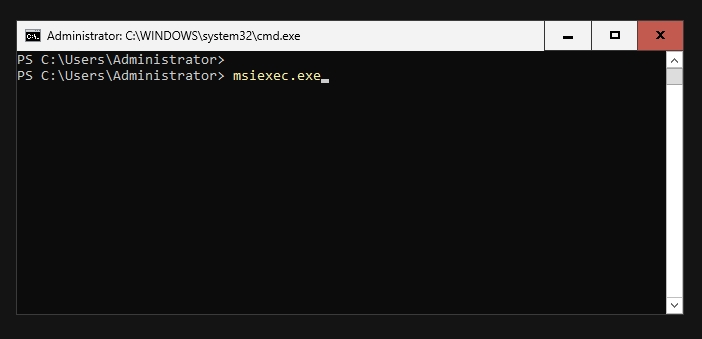
Following image shows the msiexec Windows installer GUI application running in a Windows Server 2025 Server Core installation.
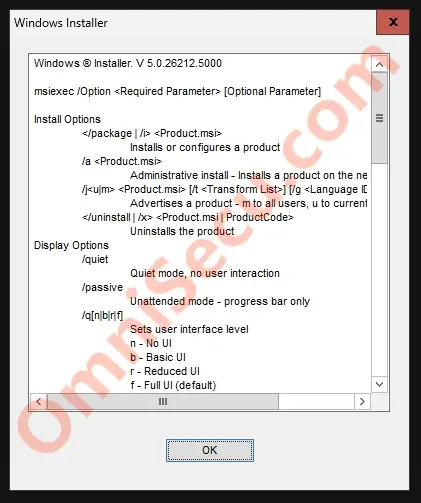
Notepad text editor
Notepad text editor is a default text editor in Windows Operating Systems. To run Notepad text editor app, type «notepad.exe» or simply «notepad» from the command prompt or PowerShell terminal, and press the «Enter» key as shown below.
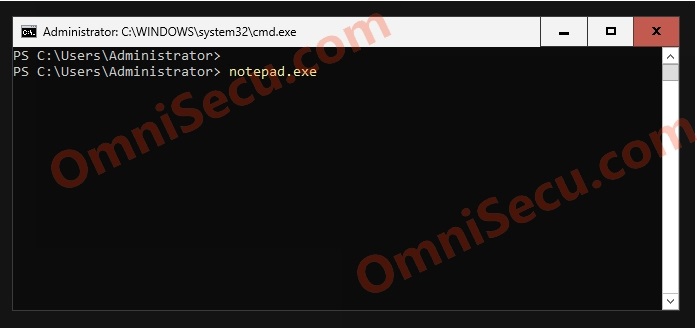
Following image shows the Notepad text editor running in a Windows Server 2025 Server Core installation.
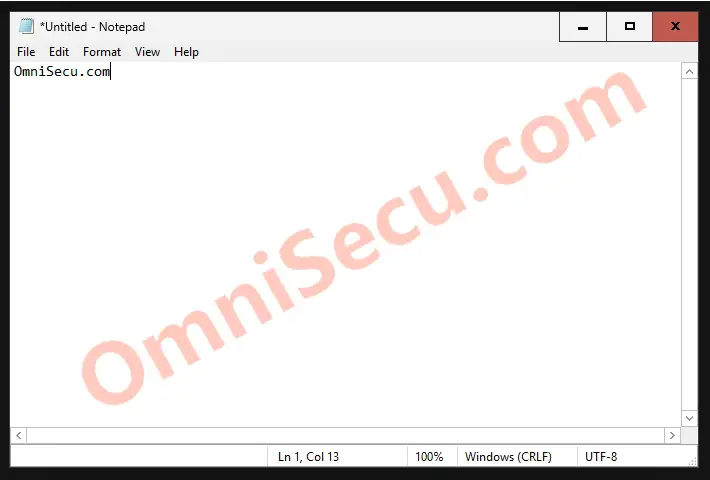
Registry Editor (regedit.exe or regedt32.exe)
Registry Editor application in the Windows Operating System can be used by the administrators to view, edit and modify the Windows Registry. Windows Registry is the most important database in Windows Operating Systems where the settings related with the Operating System and the installed applications are stored. To run the Registry Editor, type «regedit.exe» or «regedt32.exe» from the command prompt or PowerShell terminal and press the «Enter» key, as shown below.
Please take extreme care when using the Windows Registry Editor. Even a small mistake while editing the Windows registry can completely damage your Operating System.
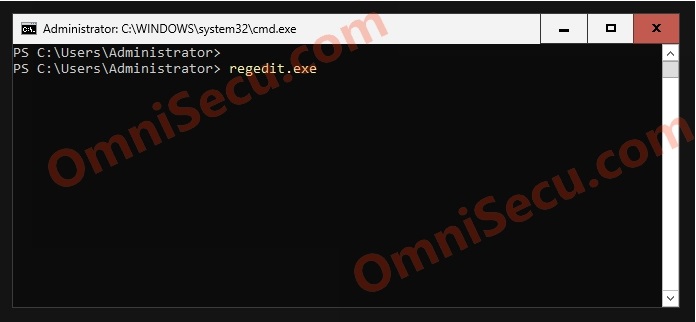
Following image shows the Registry Editor app running in a Windows Server 2025 Server Core installation.
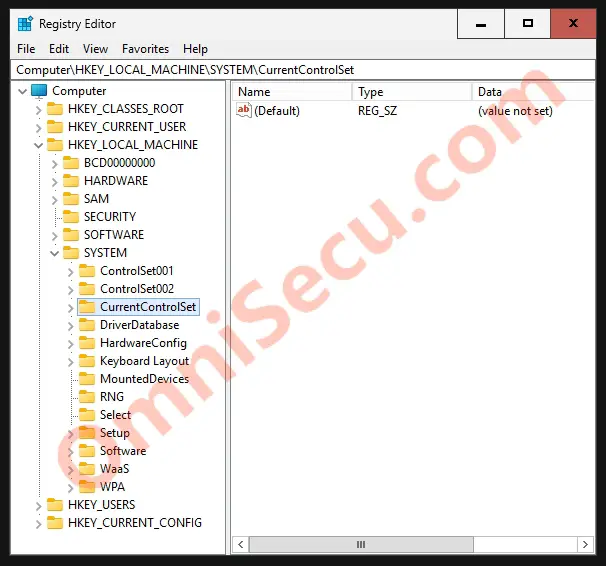
Written by Jajish Thomas.
Last updated on 31st May, 2024.
Introduction
Task Manager is an essential troubleshooting tool for identifying performance bottlenecks on a Windows Server. In Windows Server 2025, it has undergone some interface updates while retaining its core functionalities. It allows administrators to monitor system resource usage, manage processes, and diagnose system slowdowns efficiently.
Task Manager Overview
Task Manager provides an in-depth look at running applications and processes, allowing users to manage and optimize system performance.
Accessing Task Manager
You can open Task Manager in multiple ways:
- Right-click the taskbar and select Task Manager.
- Use the Ctrl + Shift + Esc shortcut.
- Press Ctrl + Alt + Del and select Task Manager from the menu.
Upon opening, the default tab displayed is the Processes tab, which shows all currently running applications and background processes.
Managing Processes and Applications
Ending Unresponsive Applications
- If an application is unresponsive, right-click on it in the Processes tab and select End Task.
- This action closes all instances of the selected application and can free up system resources.
Adding Additional Columns
Task Manager allows users to customize the displayed data by adding columns:
- Process ID (PID): Helpful for troubleshooting using Event Viewer.
- CPU, Memory, Disk, and Network Usage: Displays real-time resource consumption for each process.
Using the Details Tab for Troubleshooting
- Right-clicking a process and selecting Go to Details highlights the process executable file (e.g.,
servermanager.exefor Server Manager). - If an application depends on multiple files, Task Manager highlights all required components.
Checking Service Dependencies
- Some applications rely on Windows services to function properly.
- Right-clicking a process and selecting Go to Services displays related services.
- If a service is stuck in Starting or Stopping mode, it can be forcefully terminated through the Details tab by selecting End Task.
Performance Monitoring
The Performance tab provides insights into:
- CPU usage
- Memory consumption
- Disk activity
- Network traffic
CPU Usage
- Opening an application increases CPU usage temporarily.
- If CPU usage remains high, an application may be consuming excessive resources or be stuck in a loop.
Memory Utilization
- Displays total memory usage, available RAM, and paged/non-paged pools.
- Paged Pool: Memory that can be moved in and out of the cache.
- Non-Paged Pool: Memory guaranteed to stay in physical RAM.
- Memory Leaks: If an application does not release memory after closing, it can lead to performance degradation.
Disk Activity
- Displays read/write speeds and disk usage percentage.
- 100% disk usage for extended periods may indicate a slow HDD or an overburdened disk.
- Consider upgrading to an SSD or NVMe drive for improved performance.
Network Traffic
- High network usage may indicate background updates, file transfers, or malware activity.
- If network usage is consistently maxed out, investigate potential security risks.
Startup Applications Management
Startup applications launch automatically when Windows starts. Excessive startup apps can consume memory and slow down performance.
- Navigate to the Startup tab in Task Manager.
- Identify and disable unnecessary startup applications.
- For example, if AzureArcSysTray is enabled but not in use, it can be disabled to free up resources.
- Many Microsoft Office applications preload in the background for faster access but can be disabled to conserve memory.
User Sessions and Security Monitoring
Task Manager also provides insight into logged-in users:
- The Users tab lists active sessions on the server.
- If unexpected users are logged in, it may indicate unauthorized access.
- Suspicious accounts with administrator privileges should be investigated immediately.
- Users can expand each session to view the applications running under their account.
Forensic Investigation
- If a server is compromised, Task Manager can help identify:
- Unknown running processes
- Unauthorized executables
- Excessive resource consumption
- Suspicious processes can be terminated, and affected systems can be analyzed using security tools.
Conclusion
Task Manager proficiency is a must-have skill for system administrators. It enables rapid identification of resource bottlenecks, rogue applications, memory leaks, and security threats. Understanding how to navigate and utilize Task Manager effectively in Windows Server 2025 ensures optimal server performance and improved security management.
Windows Server 2012 R2 is an advanced server operating system that offers various features aimed at enhancing performance, security, and management capabilities. One of the tools that administrators and users may rely on for monitoring system performance and managing running applications is the Task Manager. However, in Windows Server 2012 R2, the Task Manager functionality may not be readily accessible due to its focus on headless or server-core installations. This comprehensive guide will detail how to enable the Task Manager in Windows Server 2012 R2 and discuss its usage for effective system management.
Understanding Task Manager
Task Manager is an integral part of the Windows operating environment, providing users with real-time information on system performance, running applications, and active processes. It is a powerful tool that allows system administrators to monitor resource usage, terminate unresponsive programs, and analyze system performance in depth.
Key Features of Task Manager
-
Processes Tab: Displays all running processes, their performance metrics, and allows users to end processes.
-
Performance Tab: Provides real-time performance graphs for CPU, Memory, Disk, and Network usage.
-
App History Tab: Offers insights into resource usage for different applications over time.
-
Startup Tab: Allows management of applications that start up with the operating system.
-
Users Tab: Displays connected users and their resource consumption.
-
Details Tab: Presents detailed information about the processes and services running on the server.
-
Services Tab: Displays all services, their statuses, and provides control to start or stop services.
Enabling Task Manager in Windows Server 2012 R2
The Task Manager is not always visible on Windows Server installations, particularly when operating in Server Core mode or when certain configurations are applied. Below are several methods to enable and access Task Manager in Windows Server 2012 R2.
Method 1: Using Server Manager Interface
-
Open Server Manager:
- Click on the Start button (Windows logo) on the server desktop, or press the Windows key on the keyboard.
- Select Server Manager from the dropdown menu.
-
Launch Task Manager:
- In Server Manager, navigate to the Tools menu located in the upper-right corner.
- Click on Task Manager from the list of tools available.
If the Task Manager option is not visible, you may need to adjust the server installation mode from Server Core to the Desktop Experience.
Method 2: Using Command Line Interface
For administrators who prefer command-line operations, Task Manager can also be accessed using the Command Prompt or PowerShell.
-
Open Command Prompt or PowerShell:
- Right-click on the Start button and select Command Prompt (Admin) or search for PowerShell and run it as an administrator.
-
Execute Task Manager:
- Type the following command and press Enter to launch Task Manager:
taskmgr
- Type the following command and press Enter to launch Task Manager:
-
For Server Core:
- If your installation is running as Server Core (a minimal GUI-less installation), you won’t be able to use this method to open Task Manager. You will need to use remote management tools from another Windows machine.
Method 3: Remote Desktop Access
If you cannot open Task Manager directly on the server due to restrictions in Desktop Experience installation, you can enable Remote Desktop Protocol (RDP) and connect remotely.
-
Enable RDP:
- Open the Server Manager.
- Click on Local Server in the left pane.
- Find Remote Desktop in the right pane and switch from Disabled to Enabled.
- Allow RDP connections.
-
Connect Remotely:
- Open your local machine’s Remote Desktop Connection tool (search for RDP).
- Enter the server’s IP address or hostname and connect using appropriate credentials.
-
Access Task Manager:
- Once logged in through RDP, you can access Task Manager using any of the methods described above.
Method 4: Group Policy Adjustment
If Task Manager functionality appears disabled due to group policy settings, you might need to modify the policy to enable Task Manager for user access.
-
Open Group Policy Editor:
- Press Windows + R, type
gpedit.msc, and press Enter.
- Press Windows + R, type
-
Navigate to User Configuration:
- Expand the User Configuration node.
- Navigate to Administrative Templates → System.
-
Adjust Task Manager Settings:
- Find the setting titled «Remove Task Manager». If it is enabled, double-click to open and set it to Not Configured or Disabled.
-
Refresh Policies:
- In the command prompt, use the command:
gpupdate /force
- In the command prompt, use the command:
Method 5: Use Alternative Tools
If Task Manager is still inaccessible or not meeting your administrative needs, there are third-party alternatives and built-in Windows tools that provide similar or enhanced functionality.
-
Performance Monitor:
- This tool can be opened via Server Manager or by running
perfmonin the command prompt. It provides in-depth insights into system performance and resource metrics.
- This tool can be opened via Server Manager or by running
-
Resource Monitor:
- Open it by executing the command
resmonfrom the command prompt or from the task manager itself (in the performance tab).
- Open it by executing the command
-
Sysinternals Suite:
- Consider downloading the Sysinternals Suite from the Microsoft website. This collection of advanced utilities includes Process Explorer, which is a powerful alternative to Task Manager.
Conclusion
Enabling and using Task Manager in Windows Server 2012 R2 is essential for effective system management and monitoring. The Task Manager allows administrators to track resource usage, diagnose performance issues, and manage running applications effectively. Although access to Task Manager may differ between full GUI installations and Server Core setups, using the methods outlined above, you can enable and utilize Task Manager to optimize your server’s performance.
By mastering the use of Task Manager and complementing it with other tools such as Performance Monitor, Resource Monitor, or Sysinternals Suite, you can ensure that your Windows Server 2012 R2 environment remains stable, efficient, and responsive to demands.
Reading Time: 5 minutes
A server running a Server Core installation of Windows Server 2008 could behave flaky from time to time. Monitoring it gives clues towards this behavior and/or provides insight in why it behaves flaky. I’ve taken a closer look at monitoring Server Core boxes from the command line and want to share my experiences with you on this matter today.
Task Manager
The Task Manager is a perfect utility to monitor your Server Core in a way that has been familiar since Windows 95. You can start it in any of three ways:
- Press the Ctrl, Alt and Del keys at the same time and select Start Task Manager from the list.
- Press the Ctrl, Alt and Esc keys at the same time
- Type taskmgr.exe on the command prompt
It can be used to monitor:
- Running applications and tasks
- Processes
- Services
- Performance (CPU and RAM usage)
- Networking
- Logged on users
The Task Manager is perfect, but unfortunately it lacks on a couple of points:
- It has no logging
- It doesn’t include disk space monitoring
This is on full installations of Windows Server where the Performance Monitor comes in.
Performance Monitor
The graphical version of the Performance Monitor is not part of Server Core. Fortunately there is a command line driven version available, which can be used to monitor your Server Core box from the command line. It’s called logman.exe
Even though logman.exe is a command line tool it’s a really impressive monitoring tool, since it can collect counter, trace, alert, configuration and API tracing collectors. It supports many functions of Performance Monitor from the command line. The two great things logman.exe lacks are the ability to draw graphs and to point-and-click your queries together.
Selecting counters
To select a counter to monitor using logman.exe you need to know the name of the counter to add. logman.exe however doesn’t provide this functionality. Fortunately typeperf.exe does.
To find a performance counter to monitor type the following command: typeperf.exe /q This will display a list with (installed) counters without instances. To list the performance counters with their instances type: typeperf.exe /qx
The list of performance counters is extensive, but using the find command on the output might help narrowing down what you’re looking for. For instance, when you’re looking for performance counters related to disk, type the following command to display disk-related performance counters:
typeperf.exe -q | find «Disk»
Narrowing down my search criteria, by executing find commands consecutively on the -qx option for typeperf.exe, I finally found the disk-related performance counter instance I was after (\PhysicalDisk(0 C:)\Disk Transfers/sec) using the following command:
typeperf.exe -qx | find «PhysicalDisk» | find «Disk Transfers/sec»
Building the data collector
Now that I found the performance counter I was after I can build the data collector.
My intention is to have a csv file with transfers/sec for the last few days, collected every 5 seconds. Your needs may vary, but the process to build your data collector would be identical.
logman.exe create counter DiskTransfers -f csv -c «\PhysicalDisk(0 C:)\Disk Transfers/sec» -max 10 -si 5
Where:
- DiskTransfers is the name of the data collector within logman.exe
- -f csv specifies the file format of the log for the data collector
- -max 10 specifies the maximum file size of the log file in MB
- -si 5 specifies the sample interval in HH:mm:ss format
Viewing the data collector
Now that we created the data collector we can view the collector. When you start logman.exe without any command line switches it will output defined data collectors and their state. As you’ll find out freshly created data collectors are not started automatically.
The properties for a data collector (besides whether it is actually doing anything) can be viewed using the query command line switch. To view the properties of my freshly created data collector (the first on my Server Core box) I used the following command:
logman.exe query DiskTransfers
Starting the data collector
What use is a data collector when it’s sitting idle on your box? Let’s start it up, so it starts collecting the stuff it is supposed to be collecting by using the following command:
logman.exe start DiskTransfers
Modifying the data collector (if need arises)
After you’ve created a data collector you can edit its properties by using the update command line switch. Deleting can be done using the delete switch. Both commands use the name of the data collector within logman.exe as their starting point for modification.
Using collected data
While working in black prompt windows might be enough to baffle your co-workers it won’t impress your boss much. What will really impress him (or her) is showing you’re on top of things by staring endlessly at nifty excel graphs you created within seconds. 🙂
In my case I pulled the DiskTransfer_000001.csv file from the C:\Perflogs\Admin folder of my Server Core box and worked some Microsoft Office Excel magic on it.
Other tools and products
Disk usage (du.exe)
One of the many useful free Windows SysInternals tools is Disk usage (du.exe), which is currently at version 1.3.1. This tool is capable of reporting disk space usage for the directory you specify. By default it recurses directories to show the total size of a directory and its subdirectories.
Using du.exe is as simple as downloading the zip file and unzip it to a location where your Server Core box can reach it. There are several ways to accomplish this. After you’ve copied it to the hard disk of your Server Core box you can use it in the following manner:
du.exe [[-v] [-l ] | [-n]] [-q] FileOrDirectoryPath
Where:
-l specifies the subdirectory depth of information
-n tells du.exe not to recurse folders (only information on current folder)
-q specifies not to print the banner
-v specifies to show information in intermediate directories
Examples:
du.exe -v -q C:\Perflogs
Note:
The first time you run the utility you need to agree with the End User License Agreement (EULA) before you can use this tool.
While this command will output its information to the prompt it can be told to output to a file. Scheduling the command then might prove useful to monitor disk usage and act proactively on disk usage trends.
Process Explorer
The built-in Task Manager has evolved over the past years. It now includes networking information for instance. Process Explorer is a free Windows SysInternals tool that offers even more realtime monitoring functionality. It can be used to search for thread handles and running DLLs and can explore individual processes: You can see events, files, devices, and registry keys being accessed.
If Process Explorer is one of your favorite tools you can trade in your Task Manager for Process Explorer in the following manner:
- Download Process Explorer (1.6 MB) (currently at version 11.13)
- Unpack the zip file and get the executable onto your Server Core box.
- Open Process Explorer by typing procexp.exe
- Click the button ‘Agree’ when presented with the End User License Agreement (EULA)
- In the Process Explorer window open the Options menu
- Select Replace Task Manager.
You can now start procexp.exe the same way you would start taskmgr as described at the beginning of this post.
Concluding
The Task Manager (taskmgr.exe) and the Performance Monitor are perfect tools to monitor a Windows installation locally, but unfortunately the latter is not part of Server Core. You can find another tool on your Server Core hard disk that’s useful for monitoring though: logman.exe
Further reading
Description of the Windows XP Logman.exe, Relog.exe, and Typeperf.exe Tools
Windows Process monitoring with Windows Process Monitor
Replace Task Manager with the more powerful Process Explorer
Windows SysInternals – Disk Usage v1.31
Windows SysInternals – Process Explorer v11.13
Getting installation files onto Server Core
Monitoring performance from the command line
Four Ways To Open Task Manager
TechNet Forums – Basic Commands for Monitoring Windows 2008

